[Written circa 2001; cutting and pasting messed with the MLA 7 formatting.]
The Quintessence of the Rabelaisian Pythonesque: A Study on Rabelais’s Grotesque Grandfathering of Contemporary Sketch Comedy
“There is little or no offensive material, apart from four cunts, one clitoris, and a foreskin, and, as they only appear in this opening introduction, you’re past them now.” Monty Python (“Introduction”)
Given the consensus among modern scholars concerning the necessity of undertaking in-depth studies of late twentieth and early twenty-first century sketch comedy, only one question remains: why study anything old? The answer is simple: because old stuff is often funny. And, as Eric Idle informs us:
“Levity is a universal constant. Comedy is one of the basic forces of the Universe. Mankind latches onto comedy, because levity is the expanding principle that keeps the whole bubble inflating . . . Comedy, which at the human level is merely a kind of consciousness, an awareness of something going on in the Universe other than the moment, is at the subatomic level behind everything. Everywhere” (The Road to Mars 201).
Idle: accurate, yet vague. We must be more specific. Where does comedy come from? Or, more specifically, where does postmodern sketch comedy come from? And what does postmodern mean in this context? In this context, postmodern means pythonesque. Every contemporary sketch comedy troupe traces its roots back to the Pythons, whose influence is pervasive, to say the least (that’s why we have the word “pythonesque”).i Yet the Monty Python troupe must have influences of its own. Despite its much-touted “originality,” Monty Python’s comedy is deeply indebted to an obscure Renaissance writer, Rabelais, an old guy who wrote old stuff, making Rabelais the father of our sketch comedy. Thus, the Oxford English Dictionary should note that “pythonesque” couldn’t exist without “Rabelaisian.”
Libations
To begin, what is the first thing we think of when we think of Rabelais? That’s right, we think of booze. Although we’re not sure what you think of, that’s what comes to our mind. (Please, no meta-reader-response here, it’s not nice.) This might be due to the absolute preponderance of references to ales, wines, and drinking in his body of work (or the fact that we need to make a run to the liquor store soon). The previous premise is supported by the translator, J.M. Cohen, who mentions “his references to wine and drinking” (24). The discerning reader will have easily seen where we’re going with this. Sketch comedy is, of course, all about boozing, both in subject matter and in the recreational activities of those who write and perform it. We won’t bore you with the myriad of examples we could pull out here, but instead will go straight to the good stuff: Monty Python’s “Bruces’ Philosopher’s Song.” This piece of comic history is a song sung by the Philosophy Department of the University of Woolamaloo. After the Chair of the Department tells us he “doesn’t want to catch anybody not drinking,” the professors treat us to a song detailing the drinking and thinking of the major philosophers in Western thought. Rabelais himself could’ve done no better, as most of these philosophers weren’t yet born when he was writing.
Indeed, Rabelais and the Python’s conception of the Bruces are closely linked. As Rabelais’s translator tells us, “Only in his references to wine and drinking must we be careful not to take him quite literally . . . For François Rabelais the headiest liquor of all was the liquor of learning, and the most exhilarating feasts those at which learned men met for the exchange of ideas” (24).ii Is this not what is happening at the meeting of the Bruces? After all, we are told: “Heidegger, Heidegger was a boozy beggar / Who could think you under the table.” When Rabelais’s narrator says, “I shall be as proud when men say of me that I spent more on wine than on oil as was Demosthenes, when he was told that he spent more on oil than on wine” (39), we are reminded of the hobbies of Terry Jones, one of our favorite Pythons: “Searching for the good life, [Jones] even bought his own real ale brewery. On good days, he says, the beer is terrific” (Spenser qtd. in Thompson 21).
This Argument is Grotesque
Although we are already convinced by this well-made argument, we know that our gentle readers are highly cynical. You are inherently distrustful. You’ve been slightly suspicious of this scholarship since the beginning. We are not offended. In fact, we pity you. That notwithstanding, we are now prepared to bring out a heavy hitter for your pleasure.
As most cynical people have at some point read Bakhtin, we assume you’ll recognize the name and agree with us that he is, indeed, a heavy hitter. After all, he’s Russian. We will consequently use Bakhtin and his reading of Rabelais to briefly compare Gargantua and Monty Python’s The Meaning of Life, focusing on the grotesque.
Bakhtin discusses the grotesque body in his study, Rabelais and His World. He spends the first part of the chapter redefining “grotesque” and reclaiming the Rabelaisian meaning of the word from the misuse of some non-heavy hitter (apparently that’s how you move up the heavy hitter ladder). The simple definition of the grotesque is a familiar one: “Exaggeration, hyperbolism, excessiveness are generally considered fundamental attributes of the grotesque style” (303). Bakhtin, however, proceeds to give us a more complex definition of the grotesque, “the quality, wealth, and variety of the image, its often unexpected relation to the most distant and, it may seem, unrelated phenomena” (307).
This wealthy image is readily apparent in The Meaning of Life (as would be expected, given the film’s budget). Meaning was the last collaborative effort of the entire group, although it wasn’t meant to be. Graham Chapman went and spoiled things by dying. (As John Cleese lovingly noted in his eulogy, “Good riddance to him, the free-loading bastard. I hope he fries” [qtd. in Perry 180].) The film, which opened in 1983, was successful, both in terms of audience reception and critical praise, winning the Special Jury Prize at the Cannes Film Festival. This is despite (or perhaps due to) its rejection of the traditional Hollywood narrative style. The film is a series of related sketches tracing the life of man from birth to the afterlife. It is divided into the following sections: I. The Miracle of Birth and The Miracle of Birth, Part 2—The Third World; II. Growth and Learning; III. Fighting Each Other; IV. Middle Age; V. Live Organ Transplants; VI. Autumn Years; VII. Death.
Gargantua also succeeds in taking us through the life of a [giant] man, although we don’t get complete closure on the title character’s long life. The two texts have much in common in terms of the subjects they critique. They both give special attention to the miracle that is birth, problems in their contemporary education systems, the utter stupidity of war, the schism between Protestants and Catholics, human sexuality, and the meaning of life. As we promised to be brief, we won’t go into all the details here, but will explain them all over a pint sometime.
Our Encounters With Other Scholars
We are not the first to find that Monty Python shares commonalities with Rabelais, much to our chagrin. The discovery of a certain book by John O. Thompson gave us indigestion, until we read it. You see, Thompson has edited a book called Monty Python Complete and Utter Theory of the Grotesque. Thompson has juxtaposed newspaper and magazine articles concerning the Pythons with excerpts from theorists on the grotesque. He is not as magnanimous as we are, however, and wants you to make the connections for yourself. If you’re lucky, you get a couple of sentences from him explaining what he wants you to think about as you read the selection that follows. He did, however, validate our early suspicions about the relationship between our favorite authors by including selections from Bakhtin. At one point he even says, “Rabelais himself seems . . . a verbal precursor of Python” (46).
We were even more alarmed when we stumbled upon Ellen Bishop’s “Bakhtin, Carnival and Comedy: The New Grotesque in Monty Python and the Holy Grail.” Bishop gives a smart reading of Bakhtin and the essence of carnival in the Python film. She argues:
“that the Monty Python troupe is reinscribing the carnivalesque spirit in popular culture with a sophisticated reemphasis of the grotesque, ambivalent, and universal nature of human existence that simultaneously demolishes and acknowledges the alienated “I” of liberal humanist philosophy (and one of its derivative forms, the clown), in both its omnipotent and immersed aspects” (Bishop 54).
As you may guess from this excerpt, Bishop’s point is not quite our own (her tone is slightly different as well). We will reference her later anyway. Just for fun.
Why Are All Definitions of Comedy So Un-Funny?
Kirby Olson, in his book, Comedy after Postmodernism, warns, “[the] quixotic quest to define humor is like the search for the eternal form of novelty. Every instance of humor is something new in the world, and thus it cannot be defined in advance . . . . Comedy is precisely a certain freedom from definition” (5, 6, original emphasis). How discouraging. For the purposes of our study, it might be prudent to at least attempt a working definition of that most-Pythonesque brand of humor, sketch comedy. Sketch comedy is a robust combination of stand-up comedy and theatrical performance. Actors perform short skits that range from lowbrow to sophisticated political satire. These skits are not usually linked in any coherent way, though there are often recurring themes or jokes. One of the most notable aspects of sketch comedy is the pace—successful skits are performed in a way that layers as many jokes a possible on to each other in a brief time. Aside from Rabelais, sketch comedy has roots in Vaudeville and Edwardian theatre. Limited audience interaction and a flair for improvisation mark the performances. Physical humor is essential. (Think of the Pythons’ famous Ministry of Silly Walks.) Physicality relates to what Rabelais saw as “the three constants of this life: birth, copulation, and death, which he saw in their crudest physical terms” (Cohen 17). Of course, not all sketch comedy is currently performed live, but the geniuses of sketch comedy who move to film cut their teeth on live audiences and the vegetables such audiences are apt to throw. In many ways, sketch comedy sounds reminiscent of the medieval carnival humor that Bakhtin describes, a comedy that involved all participants, a rowdy comedy that “is gay, triumphant, and at the same time mocking, deriding” (11-12).
Turning to Eric Idle again, we learn about the communal possibilities of comedy:
“We weep alone, but we all laugh together. It is this shared communality that makes it so powerful and so popular. It is constantly reminding us of our own absurdity in this vast universe. It is frequently to do with scale, cutting us down to size, laughing at our human weaknesses. For a few moments it removes us from the prison of our own personalities, the trap of our own self-created selves, and unites us in a warm shared response by making us laugh at the trivia in which we continually enmesh ourselves . . . This is both slightly painful (laughing does hurt) and healthy (because it is done communally). It is instant group therapy” (“Preface” vii-viii).
Idle’s group therapy analogy illustrates how our frames of reference change over time. Rabelais drew from a tradition of carnival as group therapy in a time when there was no “therapy,” group or otherwise. The idea of group therapy is extremely helpful in understanding the link between the spirit of carnival and pythonesque humor. In much individual contemporary therapy, there is a rigid hierarchy established between the therapist and the patient. One is to listen and instruct; the other is to confess, to be helped, to be examined. In group therapy, patients help each other and work on a level playing field. This inclusiveness is integral for both group therapy and pythonesque comedy: “The Python[s], like their medieval counterparts, at least in Bakhtinian terms, include themselves in their joking. They critique not only their culture, its politics and history, but also their stance as comic critics” (Bishop 54).
Bishop’s observation takes us into an exploration of the function of comedy (finally!). We shall have to be general here, as there are many different functions of comedy in all of its subgenres. We will also be reserving much of our discussion of the function of grotesque humor in particular for the next few pages of text. We’re sure you don’t want us to be repetitious. The comedy we are interested in, as we mentioned earlier, is pythonesque and postmodern. Olson tells us, “[in] the Greek dramatic competitions, comedy was given a small place compared to tragedy. In postmodernist theory, however, comedy has been seen as an antidote to the totalitarian state and the authoritarian individual. Comedy is an immanent form that does not make us look into the heavens or to God for answers to questions” (5). Perhaps postmodernist theory was applied to Rabelais’s work before such theory was invented, for he was accused of heresy, as he was apparently not looking heavenward enough. He also took revenge against people who had irked him by naming minor annoying characters after them (Cohen 18). Incidentally, the names of certain BBC executives have appeared in episodes of Flying Circus. Although we would never rebel against authoritarians (we are, after all, in academia), we find pleasure in watching the Pythons do so: “The world of And Now For Something Completely Different is all on the side of liberty, and notes with basilisk eye any incursions of English authoritarianism” (Gilliatt qtd. in Thompson 49).
One would think that Rabelais and the Pythons would be reacting against different forms of authoritarianism—unfortunately, that is not true when we look at these forms in general. Rabelais shows us in Gargantua a bureaucratic nightmare of education; compare his chapters 23 and 24 with the picture of boarding school education we see in Part II of Meaning. Rabelais takes on the meaninglessness and wastefulness of war. Innumerable critics have noted that the Pythons are anti-war and have posited that the troupe was rebelling against Vietnam in their own way. We are also all aware of Rabelais and his troubled relationship with The Church. (We will discuss this relationship later in the paper). Organized religion similarly gave the Pythons something to push against. As Graham Chapman noted, “[we] don’t deliberately set out to offend. Unless we feel it’s justified. And in the case of certain well-known religions, it was justified” (qtd. in Thompson 51). Peter Stallybrass, in his “Patriarchal Territories: The Body Enclosed,” notes that Bakhtin “concentrates on the body as locus of class conflict” (123, original emphasis). Rabelais’s grotesque royal giant literally and repeatedly urinates on his people. This makes the class distinctions illustrated by the comparison between First and Third World London childbirth in Meaning seem subtle. Stallybrass notes, in Bakhtin’s theory of the grotesque, “[it] is precisely these privileged places [palaces, churches, institutions, private homes] that the grotesque interrogates and subverts” (124).
Grotesque Bodies
Where were we? Oh, yes. We’ve come back to Bakhtin. Let’s take a moment to review Bakhtin’s complicated view of the grotesque. As he tells us, “We find at the basis of grotesque imagery a special concept of the body as a whole and of the limits of this whole. The confines between the body and the world and between separate bodies are drawn in the grotesque genre quite differently than in the classic and naturalist images” (315). The second part of this definition is of utmost importance when considering sketch comedy, which is, by definition, not classic or naturalistic. Grotesque bodies are bodies that are monstrous, unsettling, and disproportional. Rabelais gives us a family of giants, out of proportion to the rest of the world, who consume too much and whose urinations drown people. Monty Python gives us a triad of grotesque bodies in a brief sketch that appears in the much-celebrated “Middle of the Film.” We are asked to “find the fish” in a surrealistic scene. Terry Jones appears with shortened legs and elongated, rubbery arms to point this way and that, as Graham Chapman, in punk/s&m drag, asks about the location of the fish in what can only be described as an expressionistic fashion (well, you try describing it better). Then there’s the unidentified Python acting as a limping waiter with a discolored elephant head. (We won’t even mention the six fish watching all this with Python-member heads.)
Despite this example, the most expressively grotesque moment in the film (in all senses of the word “grotesque”) occurs in the scene with Mr Creosote, “the grossest of all gluttons, dining in an expensive restaurant and vomiting frequently into a bucket provided by the obsequious head waiter, Cleese. Eventually the disgusting creature, having taken one tidbit too many, explodes and showers the entire restaurant with regurgitated debris” (Perry 169). As Bakhtin reminds us, Rabelaisian exaggeration “is most strongly expressed in picturing the body and food” (303). The Creosote scene provides us with the grotesque in body and food in a remarkably memorable way. The body of Creosote literally expands beyond the limits of corporeal form, as the body explodes and redistributes itself around the room. The sort of exaggeration that Rabelais can describe in words becomes powerfully sickening in the visual medium of film. (Believe us, we know, as we were trying to finish a cupcake while reviewing this section of the film).
When Bakhtin tells us that the grotesque body “is a body in the act of becoming. It is never finished, never completed; it is continually built, created, and builds and creates another body. Moreover, the body swallows the world and is itself swallowed by the world” (317), he refers us to the scene of Gargantua’s birth and the feast of cattle-slaughtering. The Creosote scene might be labeled the feast of the “wafer-thin mint,” as that is what pushes Creosote to his explosion. In this scene, we see Creosote swallowing the world in the form of all the food at the restaurant, only to be swallowed by the world. That is, the room that becomes covered with and composed of him, becomes the world when our relative focus moves from his contained body to the uncontained form. We might also point out that in this moment we can see the inner organs of Mr Creosote, with his heart still beating. Thus, we are drawn again to Bakhtin, who assures us that “[the] grotesque image displays not only the outward but also the inner features of the body: blood, bowels, heart and other organs. The outward and inward features are often merged into one” (318).
More Grotesque Bodies
While Mr Creosote may be the most obvious example of the Rabelaisian grotesque in Meaning (and perhaps all of Python [and perhaps all of sketch comedy]), it is far from the most intriguing in terms of exploring Bakhtin’s discussion of Rabelaisian grotesque form. Bakhtin informs us that “the essential role belongs to those parts of the grotesque body in which it outgrows its own self, transgressing its own body, in which it conceives a new, second body: the bowels and the phallus” (317). We are not sure about this. In fact, we are disturbed by Bakhtin’s phallocentric view of the human body. After all, he never mentions that the body he discusses is a gendered one.iii Much of the imagery he interprets can be read as female imagery, although he seems stubborn in his reluctance to do so. Let us consider, for a moment, the possibilities of a grotesque female form. Is there any time when the female form fits these definitions? It seems to us that we might want to consider childbirth. At the time of birth, a mother’s vagina “outgrows its own body,” dilating in way that seems impossible (even to the mother). This transgression of form is what allows for the birth of the second body. (This seems basic, yet we will forgive Bakhtin, as sex education was not common in the time of his schooling.)
Both of our texts begin with birth. Gargantua is born to his mother, Gargamelle, after he spends eleven months in her nurturing womb (46). At the time of his birth, Gargamelle is distended both with child and with an overabundance of food. Although Rabelais spends much time describing the latter, we are not meant to forget the former. And while our author draws attention to her bowels, through the dropping of her fundament (47), and to her ear, from which the baby comes forth, the vagina is ever present. The base sexual jokes in the scene leading up to the birth concerning the flagon, or vagina (49), serve to foreground the vagina even as the immediate attention seems to be with the bowels.
The birth in the beginning of Meaning is completely different. Although we see a distended belly, it is covered with a white sheet. Except for the blue scrubs on the doctors, we are looking at a white, sterile birth. In this version of birth, what is monstrous is the behavior of the doctors and the administrator, who seems altogether too impressed by the machine that goes “ping.” If the mother in this scenario is sterilized, the baby becomes grotesque. It is yanked out of the womb, covered in blood, and waved around in the air before being completely isolated from the mother.iv
This is not the only birth shown in Meaning, however.v There is one section of the film with little chance of ever being part of Gargantua’s life: Life Organ Transplants. In this scene, a man attempts to persuade a middle-aged woman to donate her liver although she is still alive, knowing the procedure will kill her. A fantasy scene in which Eric Idle comes out of the icebox and sings the “Galaxy Song” accomplishes this. This song discusses the dimensions of the universe and the rate of our revolution around our galactic central point, etc. During this song, we see the universe and star clusters. In the instrumental solo, a green grid is laid over the universe. The grid morphs into a female body. This green grid woman becomes impregnated by a shooting star. The body expands and the camera angle moves so the viewer is confronted by the vagina, which is also expanding. At the point of largest expansion, the body disappears and the image of Eric Idle and the woman are superimposed over the universe as he wraps up the song: “So remember when you’re feeling very small and insecure / How amazingly unlikely is your birth.” Bakhtin points “out that the grotesque body is cosmic and universal . . . This body can merge with various natural phenomena, with mountains, rivers, seas, islands, and continents. It can fill the entire universe” (318). The cosmic body presented to us by the Pythons is a gendered body. It is the female form that fills the universe.vi
It is also a female body that is about to be sacrificed for another life to be saved when the woman agrees to let the man have her liver. After all, according to the donor cards, the donors have to be dead for the livers to be used. (Her husband’s was taken at the beginning of the scene.) We can see how, then, these grotesque forms are what Bakhtin calls the “double body,” “in which the life of one body is born from the death of a preceding, older one” (318). Hence, the female form can be grotesque, as the Pythons well know. For example, an oft-forgotten part of the Creosote scene occurs when a couple seeks to flee the restaurant due to their discomfort at Creosote’s eating habits. The wife provides the excuse—they have to catch a train and she’s on her period: “I don’t want to start bleeding all over the seat.” (We don’t hold that menstruation is inherently grotesque. On the contrary, like Dave Foley of The Kids in the Hall [another pythonesque troupe], we have a “good attitude towards menstruation.” We do acknowledge, however, that there is a lingering bias against menstruation in the general, poxy public.)
Both the Creosote scene and Live Organ Transplant allow us to share in a particular Rabelaisian pleasure: the dissection of a human form. Bakhtin briefly recounts for us the success of Rabelais’s 1537 public dissection (360). The open human body, in all of its grotesqueness, is displayed in both scenes. We’re certain Rabelais would have gloried in this, given his great interest and expertise in all things medical. We glory in the certainty that it is uncanny that Bakhtin’s discussion of the influence of medicine on Rabelais’s works should end thusly:
“The first foundation of medicine, according to Paracelsus, is philosophy, the second is astronomy. The starry sky is also contained in man himself, and the physician who ignores the sky cannot know man. In this theory the body of man has an extraordinary wealth, being rich with all that exists in the universe. The universe is, so to speak, reassembled in all its diversity within the human body; all its elements are found and are connected in the sphere of the individual body” (361-2).
If we substitute “the body of woman” for “the body of man,” we find that Monty Python is then, part of the world of Rabelais. Gee, it’s almost like they read him. Oh, wait. They surely did.vii
In fact, at least one member had to know the word “Rabelaisian,” as it appeared in “The War Against Pornography,” in which an interactive television presenter attempts to make a documentary on seafood more intriguing by discussing the degenerate sex lives of its subjects: “The Great Scallop: This tacky, scrofulous old rapist is second in depravity only to the common clam. This latter is a right whore! A harlot! A cynical, bed-hopping, firm-breasted, Rabelaisian bit of seafood that makes Fanny Hill look like a dead pope!”
The Meaning of Life
In Bishop’s study of The Holy Grail, she notes that the film’s use of “the grotesque of the carnival comic[] relieves us of some of the fear of death by at least making fun of the ridiculous ways humans bring it upon themselves” (Bishop 60). Before we leave this brief study, we should explore how our grotesque texts deal with the Meaning of Life. After all, the characters in The Holy Grail have an answer to the Meaning of Life—they are to serve God, to find the Holy Grail. In Meaning, we need to have the fear of living relieved and we do so by looking at our self-inflicted problems: overpopulation, war, violence, the horrors of education systems, bureaucracy, and even the stagnation of our personal relationships.
We should note that Gargantua doesn’t promise to give us the Meaning of Life. The narrator informs us we “will find an individual savour and abstruse teaching which will initiate [us] into certain very high sacraments and dread mysteries, concerning not only our religion, but also our public and private life” (38). This is immediately undermined as he questions the intentions of Homer. Rather, we are told that if we “read joyfully on,” it will be to the benefit of our “bodily comfort and to the profit of [our] digestions” (39). In contrast, The Meaning of Life begins with a song sung by a French waiter (though not the aforementioned “obsequious” French waiter). This title song tells us that we will be told if God is real, why we’re here, if life is a joke, and if we’re “just simply spiraling coils of self-replicating DNA.” The audience (along with the Python-headed fish) waits anxiously for this information to be revealed. When we find our singing waiter cleaning up after Mr Creosote, we believe our quest is at an end. Our sage tells us what he learned on his mother’s knee—that he should make people happy: “And so I became a waiter. Well, it’s not much of a philosophy, I know. Well, fuck you. I can live my own life in my own way if I want to. Fuck off. Don’t come following me.” Our once-benevolent teacher abandons us before we reach Part VII.
When we reach the end of The Meaning of Life, therefore, we may still be unfilled as an audience. A well-bred hostess, (who celebrated The Middle of the Film with us) finally clues us in to the great mystery:
“Well, it’s nothing very special. Try and be nice to people. Avoid eating fat. Read a good book now and then. And try and live in peace and harmony with people of all creeds and nations. And finally, here are some completely gratuitous pictures of penises to annoy the censors and to hopefully spark some controversy, which, it seems, is the only way these days to get the jaded video-sated public off their fucking asses and back in the sotting cinema. Family entertainment? Bullocks. What they want is filth: people doing things to each other with chainsaws during tupperware parties; babysitters being stabbed with knitting needles by gay presidential candidates; vigilante groups strangling chickens; armed bands of theatre critics exterminating mutant goats. Where’s the fun in pictures? Oh, well. There we are. Here’s the theme music. Goodnight.”
One link to Rabelais is immediately apparent. The long, detailed list of movie filth is not only an example of a cornerstone of pythonesque comedy, but is also reminiscent of the cornucopian style of our renaissance monk. The promise of the piece also takes us to Rabelais. Our hostess is supposed to give us the meaning of life, to reward our slogging through the entertaining, but not ultimately spiritually enlightening, film. At first, it seems we get this information, although “it’s nothing very special.” The proceeding rant, however, undermines this meaning of life as the audience comes to know that the ultimate message of the film, and therefore, life, concerns the audience’s own perverse desires. Likewise, at the end of Gargantua, we are shown a prophetic riddle. The monk queries Gargantua: “What is the meaning and significance of the riddle according to your understanding?” (163). Gargantua gives a short, trite, spiritual answer. The importance of this answer is deflated by the monk’s response: “That is not my explanation. The style is like Merlin the Prophet. You can read all the allegorical and serious meanings into it that you like, and dream on about it, you and all the world, as much as you ever will. For my part, I don’t think there is any other sense concealed in it than the description of a game of tennis wrapped in a strange language” (163).
A Final Push
The themes discussed by Meaning’s wellborn woman are also familiar to Rabelaisian scholars. (Note that we’re still discussing the long quote—we bet you thought we were just trying to fill pages). Cursing, censorship, and insulting the audience—these are the themes favored by Master Alcofribas (the narrator) in his Prologue to and Chapter One of Gargantua (they’re also the themes favored in his other direct addresses to his audience, but we don’t expect you to go out and read them now). First off, there’s the cursing.viii As it offends us, we won’t quote profanities directly from the Prologue, but if you fancy these sorts of things, we can assure you there are at least two naughty words, perhaps more, depending on your level of prudishness. Though we would never use that kind of bloody language, we tend to think of the cursing in Rabelais as an example of his love for the language. As his translator tells us, Rabelais “is in love with his medium, [a] man for whom words call up associations, in contrasts to [a] man who employs them to express previously conceived notions” (18).
The Pythons and Rabelais both encountered censorship in their long and offensive careers. Rabelais’s Gargantua was written after Pantagruel’s censorship. Pantagruel was “condemned by the Sorbonne as obscene” in 1533 (Cohen 28). Not surprisingly, Rabelais referenced this censorship in his Prologue and first chapter. He defends his work by explaining that he was not making heretical references to Jesus Christ, and adds, “What is more, the devils (that is to say detractors and hypocrites) prevent me” (42). Unfortunately, this disavowal didn’t help him with his critics: “[such] was the indignation of the pilloried theologians that François Rabelais was forced temporarily to go into hiding” (Cohen 28). Unlike those of Rabelais, the critics of Monty Python don’t have the power to physically torture or murder those who offend them. The Python answer is therefore to promise its audience penis shots to offend their critics—without delivering! But, The Meaning of Life, after all, was composed and produced after the much-censored Life of Brian. The Pythons came under fire from the inheritors of Rabelais’s censors: “the Roman Catholic Office for Film and Broadcasting [in America] rated Brian ‘C’ for condemned, making it a sin to see the film” (Hewison 79). Indeed, as so many faiths protested the film, “[the] Pythons could only conclude that they had made an unwitting contribution to religious reconciliation and church unity” (Hewison 79). In England, the Pythons learned what the term “blasphemous libel” meant when threatened (you can learn what this means by reading Hewison 61).
This was not the only time the Pythons had been censored, however. (If you don’t believe us, please note that Mr Hewison has written an entire book on the subject. And that we read the whole thing.) At some points in their career, they “have chosen . . . to modify their ideas in the interest of getting them across to as wide an audience as possible” (Hewison 5). This is not quite the motivation for Rabelais when he changed some of the language in Gargantua’s second printing (Cohen 22). More intriguing are the moments when they have exploited their censorship. For example, when Monty Python’s Contractual Obligation Album came out, and was censored, they added material to the cover, celebrating its censored status (Hewison 36).ix The Pythons have always anticipated criticism. Their first season of Flying Circus contains fake letters from outraged viewers, although at the time they were created by the team, they’d not yet had viewers.
Speaking of viewers . . .
Finally, just as our wellborn lady insults her audience by describing their own predilections for violence and sex and refers to their “fucking asses,” after giving them the meaning of life, Rabelais’s narrator constructs a troubled relationship with his audience. He repeatedly refers to them as pox suffers, compares them to dogs, and curses them. At the same time, he draws them closer, as one would a drinking buddy, and offers them a toast: “But listen to me, you dunderheads—God rot you!—do not forget to drink my health for the favour, and I’ll return you the toast, post-haste” (39). Think back to our pseudo-narrator, the non-obsequious French Waiter. He is at first kind to the audience, inviting them on a journey to his place of birth. Then he turns on us: “ . . . Well, fuck you. I can live my own life in my own way if I want to. Fuck off. Don’t come following me.” Compare this to Gargantua’s narrator: “I doubt whether you will truly believe in this strange nativity. I don’t care if you don’t” (52). (Of course, the language is a bit different, but let’s between the lines as we read between the centuries.) Rabelais likes to play with us. We would like to read his promised “pleasant titles of certain books . . . such as . . . On the Dignity of Codpieces, Of Peas and Bacon, cum commento, &c” (37). How disappointing not to be able to. Similarly, we are sure many were discomforted to find that Monty Python’s Big Red Book was, in fact, blue.
Conclusion
As Bakhtin is a much heavier hitter than we are, we will concede to one of his many excellent points: “We cannot understand cultural and literary life and the struggle of mankind’s historic past if we ignore that peculiar folk humor that always existed and was never merged with the official culture of the ruling classes” (474). Given that Bakhtin and others like him have done such a fabulous job with the historical struggle of mankind, we have had to turn our attention to our contemporary struggle.
We are certain that Rabelais would enjoy all the comedy engendered by his form and style. He would appreciate the mixing of high and low language and art that we now label postmodern. It might please him to note that sketch comedy, often dismissed as insignificant by the vapid, uneducated masses, is the bane of politicians.x It would not surprise him that the power of this comic form is often hampered by censorship. It is now time, gentle reader, for you to pass judgment on this tale. We would remind you that what you have before you is both logical and true. We will end by quoting Leonard Nimoy, an expert on things both logical and true (although not a logistician, he practically played on T.V.!): “by true, I mean false. It’s all lies. But they’re entertaining lies. And in the end, isn’t that the real truth? The answer is: No” (“The Springfield Files”).
Notes
i You may trust that we’ve watched a lot of sketch comedy, noting similarities. You may also trust that we’ve seen and heard many interviews with the purveyors of sketch comedy, who all reference the Pythons. If that alone won’t allow you to accept this necessary premise of our argument, you may note that George Perry calls Lorne Greene (we think he means Lorne Michaels of Saturday Night Live) a “dedicated follower of Python” and says, “there are many signs of Python influence in the American show” (148).
ii We don’t think we should trust the translator here. How can this be the “only” place? We think he doth protest too much.
iii Stallybrass also noticed this problem with using Bakhtin as the foremost critic of the grotesque.
iv We might also note that the bodies of babies and children are inherently grotesque, as these bodies are out of proportion. That is, their heads are much bigger than their bodies. Additionally, the bodies of children become monstrous in The Meaning of Life when the bodies become too numerous to sustain. Just as Gargantua is difficult to feed due to his appetite, the children in Part 2 of “The Miracle of Birth,” in the third world that is London, become consumers on too grand a scale. While Gargantua’s father is able to afford his upkeep, the Catholic father of his multitude must sell his children for scientific experiments.
v We’re not including a discussion of the second birth in the film, that of another child to the Catholic family. The child falls from between the mother’s legs as she does the dishes.
vi This body is also, technically, a giant, even larger than Gargantua.
vii All members of the troupe received stellar “Oxbridge” educations, which most certainly included Rabelais. Terry Jones, for example, studied literature (specifically medieval) at Oxford. Oxford currently has two specialists on Rabelais in the French literature department alone. For a more detailed account of Python education, see Perry.
viii Bakhtin notes, “the theme of mockery and abuse is almost entirely bodily and grotesque” (319). Just as Rabelais is a world-class abuser, so is Monty Python. Some phrases that come to mind: “Your type really makes me puke, you vacuous, toffee-nosed, malodorous pervert!” (“Argument Clinic”); “Your mother was a hamster and your father smelt of elderberries!” (“French Taunter”). If you would like to explore the wonderful world of Pythonesque abuse, you can do so at Pythonline.com, where you can have the AbuseMeister custom make an abusive email for your friends or enemies. (Research is fun.) We can also note here that John Cleese took great pride in “being the first person to ever say ‘shit’ on television” (Perry 180).
ix We have to add here that one of the songs on the album (recorded before censoring issues) was “I Bet You They Won’t Play This Song on the Radio.” There are no actual profanities in the song; rather, the lyrics are interrupted by horns, etc. But we get the idea: “It’s not that it’s **** or controversial, just that the ****ing words are awfully strong. You can’t say **** on the radio, or ****, or ****, or ****. You can’t even say ‘I’d like to **** you some day,’ unless you’re a doctor with a very large **** . . .”
x Decades ago, the Smothers Brothers were taken off the air because their political satire was deemed unsuitable for prime-time television. During our last Presidential election, Saturday Night Live sketches and satire from The Daily Show and The Colbert Report ridiculing the candidates were run on CNBC and other news networks due to their effect on the political process.
Works Cited
Bakhtin, Mikhail. Rabelais and His World. Boston: MIT Press, 1968.
Bishop, Ellen. “Bakhtin, Carnival and Comedy: The New Grotesque in Monty Python and the Holy Grail.” Film Criticism 15.1 (1990): 49-64.
Cohen, J.M. “Translator’s Introduction.” The Histories of Gargantua and Pantagruel. Rabelais, François. trans. J.M. Cohen. Harmondsworth, Middlesex: Penguin Books Ltd., 1972. 17-31.
Hewison, Robert. Monty Python: The Case Against. London: Eyre Methuen Ltd., 1981.
Idle, Eric. “Preface.” Footlights! A Hundred Years of Cambridge Comedy. Robert Hewison. London: Methuen, 1983.
Idle, Eric. The Road to Mars: A Post-Modem Novel. New York: Pantheon Books, 1999.
Meaning of Life, The. (Film) dir. Terry Jones. 1983.
Monty Python. “Argument Clinic.” The Final Rip-Off. (Audio Recording) Virgin Records Ltd., 1987.
– – – . “Bruces.” The Final Rip-Off. (Audio Recording) Virgin Records Ltd., 1987.
– – – . “French Taunter.” The Final Rip-Off. (Audio Recording) Virgin Records Ltd., 1987.
– – -. “I Bet You They Won’t Play This Song on the Radio.” Monty Python’s Contractual Obligation Album. (Audio Recording) Virgin Records Ltd., 1980.
– – -. “Introduction to the Executive Version.” Monty Python’s Holy Grail (Remastered). (Audio Recording) Sony Legacy, 2007.
– – -. “The War Against Pornography. Monty Python’s Flying Circus. Season 3, episode 6. DVD. A&E Home Video. 2000.
Olson, Kirby. Comedy After Postmodernism. Lubbock: Texas Tech University Press, 2001.
Perry, George. The Life of Python: The History of Something Completely Different. Philadelphia: Running Press, 1995.
Rabelais, François. The Histories of Gargantua and Pantagruel. trans. J.M. Cohen. Harmondsworth, Middlesex: Penguin Books Ltd., 1972.
“The Springfield Files.” The Simpsons. Fox. 12 Jan. 1997.
Stallybrass, Peter. “Patriarchal Territories: The Body Enclosed.” Rewriting the Renaissance. Ed. Margaret W. Ferguson, et al. Chicago: The University of Chicago Press, 1986. 123-142.
The Kids in the Hall. “Menstruation.” The Kids in the Hall. Season 4, Episode 13. DVD. Sony Home Entertainment, 2006.
Thompson, John O. Monty Python Complete and Utter Theory of the Grotesque. London: British Film Institute, 1982.



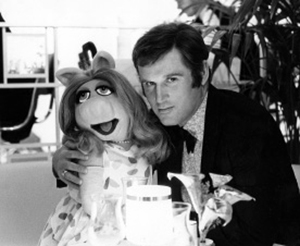









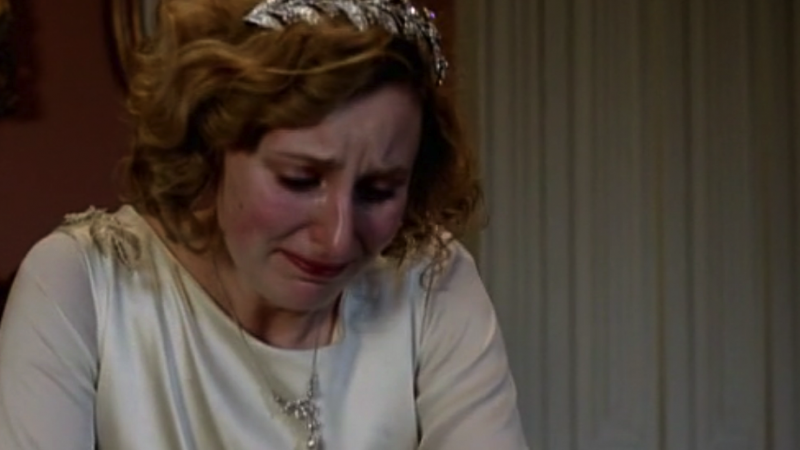
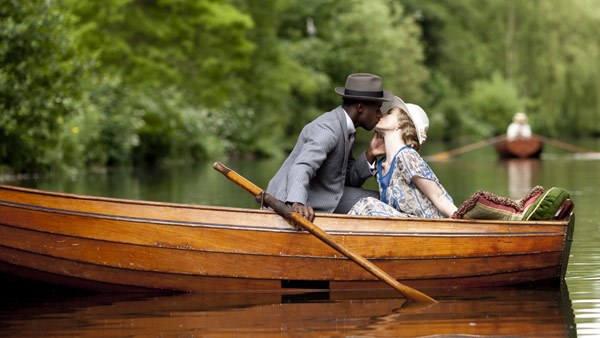
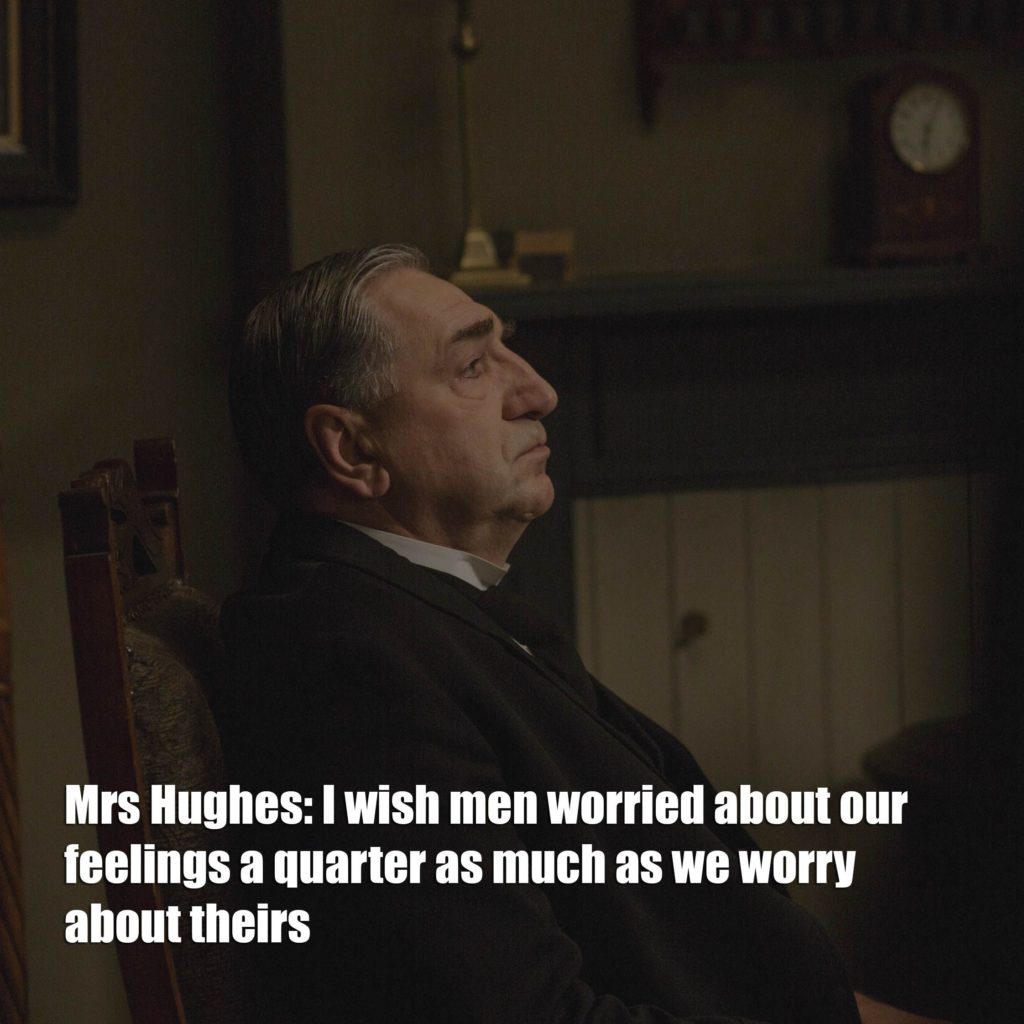
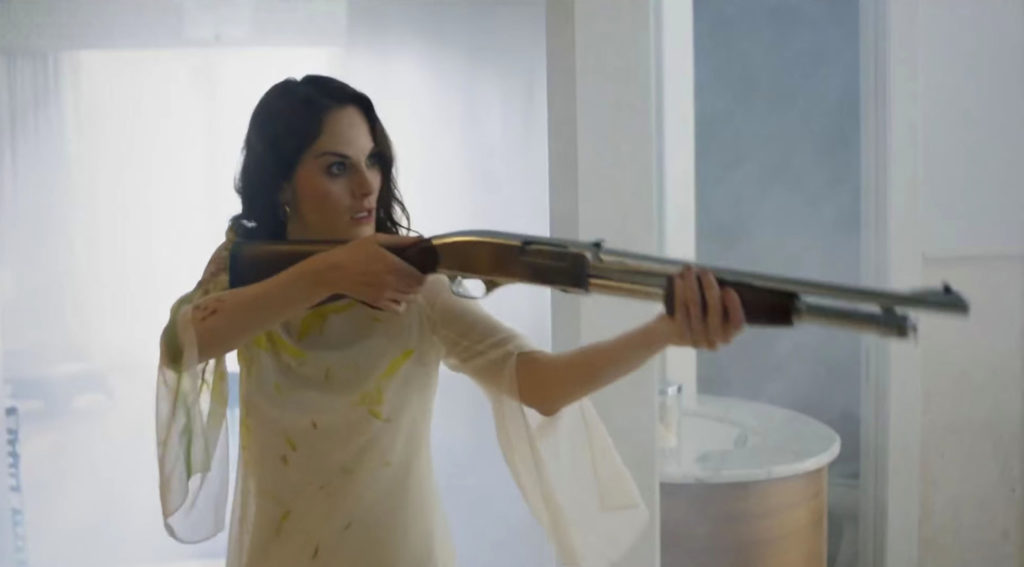




Recent Comments